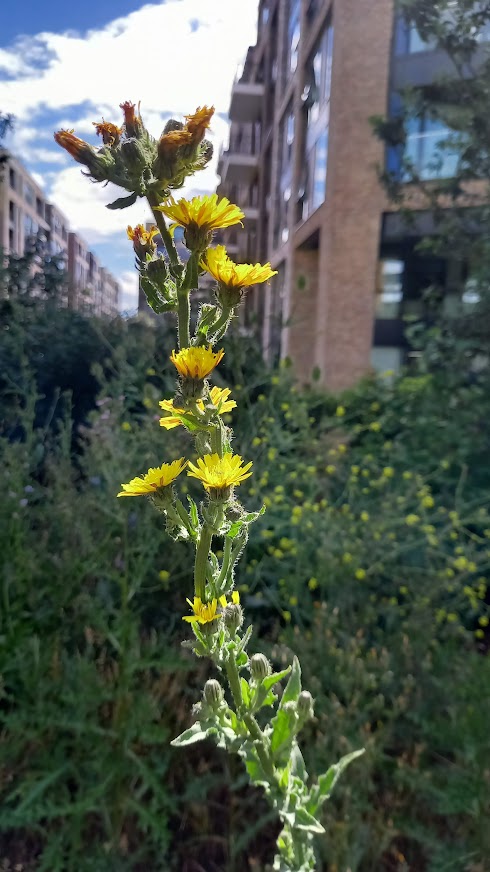In June, I cleared the site of the goose grass that had started to encroach back in April. But after downpours in May, followed by sun, it turned out that the goose grass was the least of my worries. Much of the site had been engulfed by tough, long grasses, making it difficult to walk through to check on the bee hotels and to see any bees on flowers. I did spy a cinnabar moth and a ladybird (pictured below). I decided I needed to return with reinforcements to help me pull up some of the grasses to make some pathways through…
So, a few days later myself and Alex arrived to tame the wilderness. As well as clearing some of the grass, Alex had the great idea of pruning the row of hawthorn trees to create more of a hedgerow effect. By the end of the day the sit still looked wild, but a lot more manageable. We left the huge thistles as they will attract many pollinators when they flower next month.
I returned on 1 July, to see what pollinators the thistles are attracting. There were many different species of bees, but only the leafcutter bees were on the thistles that had grown as tall as myself, if not taller. I also saw one going into a hole in a log. If she’s nesting there, she will plug the entrance with some leaf which will be visible on our next visit.
Other bees I saw on the site included:
- Common carder bees on the comfrey I had planted (middle photo below)
- Honeybees on Common wild common mallow (pictured below right) that has grown
- Buff-tailed bumblebees on the few brambles and buddleia that we left when we originally cleared the site a year ago
- Solitary bee I couldn’t ID sunning itself on a holly leaf (below left).
I also saw a gold finch, Maybe because there are teasels growing on the site (middle photo), whose seed heads these birds will love to eat later in the summer.
I didn’t see any Wool carder bees, despite the Lamb’s ear (below left) that they use for nesting growing well from the plugs I’d planted. Sow thistle (middle photo) and chicory (below right) were also flowering.
From the outside the site looks pretty much the same as it did in July 2021 (picture below right), but there’s certainly more diversity of plants and of insects.
To find out how this project has progressed over it’s first year read my two earlier blogs from August 2021 and April 2022.




















